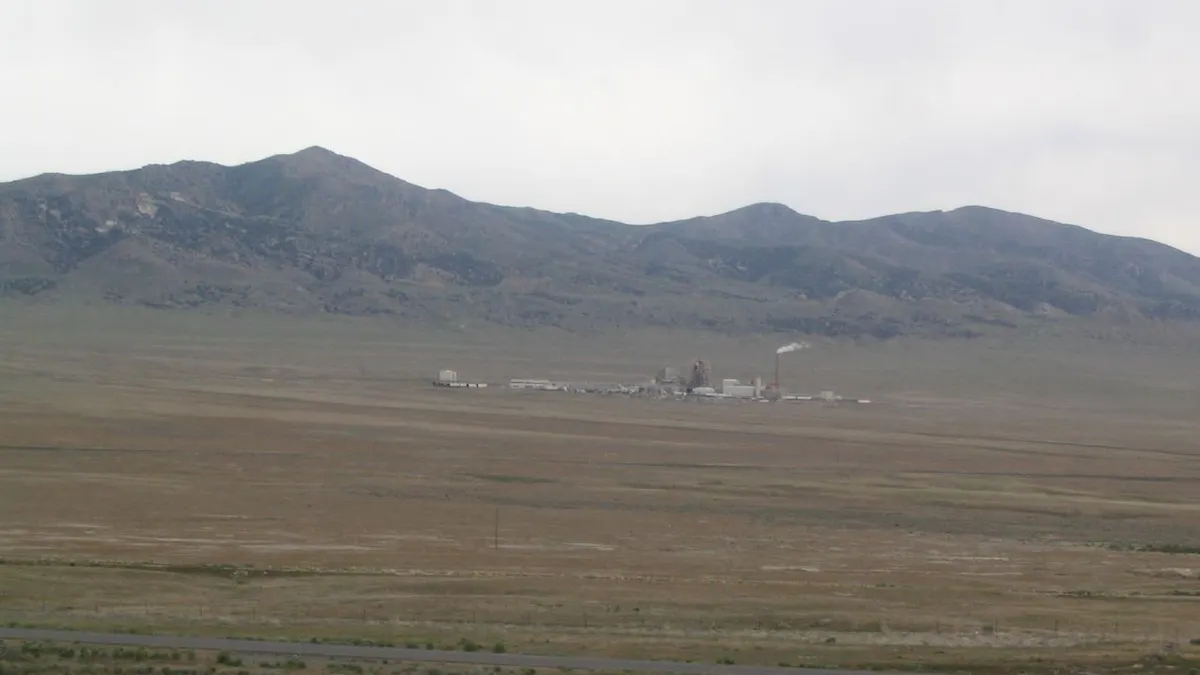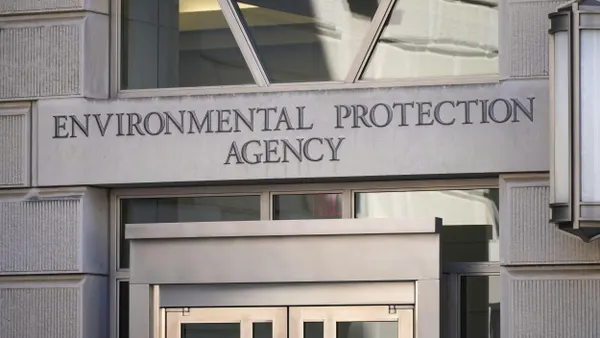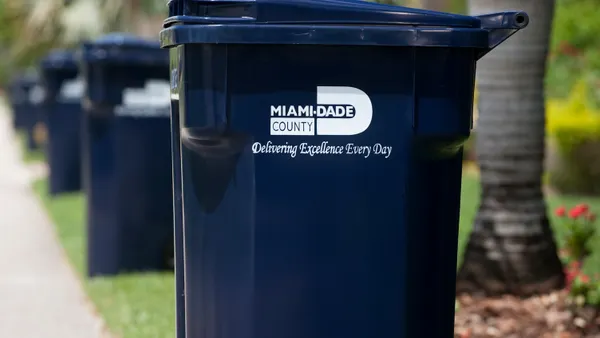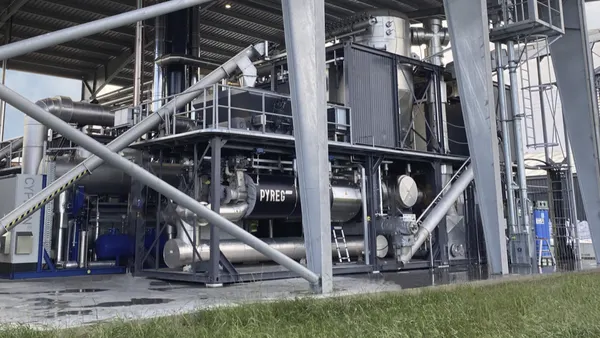Dive Brief:
- The U.S. EPA released last week the results of a study conducted with Clean Harbors on the effectiveness of destroying PFAS, or per- and polyfluoroalkyl substances, in a hazardous waste incinerator. The test revealed the incinerator was able to reach destruction efficiencies of between 99.95% and 99.9999% for nine PFAS chemicals.
- This is the third PFAS destruction test conducted in coordination with EPA researchers at Clean Harbors' facility in Aragonite, Utah. The company has been working with the federal agency to demonstrate its ability to safely dispose of the toxic chemicals.
- "This is the most comprehensive PFAS incineration test to date and provides valuable data about PFAS incineration," the team of researchers conducting the study noted in their report, "but is not intended to be a general recommendation of incineration for the treatment of PFAS."
Dive Insight:
Clean Harbors has offered PFAS management for clients for several years as they look to get ahead of shifting state and federal regulations concerning the highly persistent chemicals.
The company has declined to share projected revenues from the PFAS destruction business over the last two quarters. But at the beginning of the year, co-CEO Eric Gerstenberg said Clean Harbors’ pipeline of PFAS business grew an estimated 20% each quarter.
Gerstenberg celebrated the findings of the report in a statement. He said the results showed that Clean Harbors “can effectively eliminate the threat from forever chemicals in its multiple forms and at commercial scale with consistent outcomes.”
“These study results further validate that we can safely and thoroughly destroy a wide variety of PFAS compounds in our high-temperature RCRA-permitted hazardous waste incinerators,” Gerstenberg said. “We have always been confident in the capabilities of our facilities as it relates to PFAS compounds.”
Clean Harbors has previously run studies at the Aragonite plant to demonstrate the facility's seven-step PFAS incineration process. It demonstrated 99.99% destruction of PFAS compounds in a study the company commissioned in 2022.
But following those earlier tests, scientists and other observers have expressed concern that incineration results in incomplete destruction of PFAS, sometimes creating short-chain chemicals that may still pose a health risk. The most recent test was conducted in order to test against those concerns.
The research team included EPA staff and employees of EA Engineering, Science, and Technology as well as Focus Environmental, companies which had worked on previous tests at the Utah site. Eurofins Environment Testing also conducted analysis of the emissions samples to compare against EPA's own results.
The researchers spiked inflows of nine kinds of PFAS into the incinerator as a controlled test, including PFOA, PFOS and GenX. They did the same for aqueous film-forming foam, a PFAS-laden material used extensively by firefighters that the Clean Harbors facility already treats.
The researchers then used multiple monitoring methods on the stack. That includes a method developed by the EPA several years ago that tracks 49 PFAS chemicals. It also includes the OTM-50 method released by EPA in a January 2024 study that looked for compounds that can result from incomplete destruction of PFAS.
The 2024 study found that such compounds, known as products of incomplete destruction, were at or below the detection limit in resulting emissions tests.
Besides their caution that the results not be considered an endorsement of PFAS incineration, the researchers also noted that the test results might not apply equally across other hazardous waste incinerators. The EPA also offers non-binding destruction and disposal guidance for waste contaminated with PFAS that it last updated in 2024, which includes an analysis of incineration methods.
The EPA continues to study the possibilities of destroying PFAS via incineration. It conducted a similar test with Reworld at the company's municipal solid waste incinerator in Lake County, Florida. The results of that test are likely to be released next year, according to an agency spokesperson.
Veolia earlier this year also released the results of its own test at one of the company’s hazardous waste incineration facilities indicating it could successfully destroy up to 99.9999% of PFAS test compounds.
Editor’s note: This story has been updated with comment from Clean Harbors.











